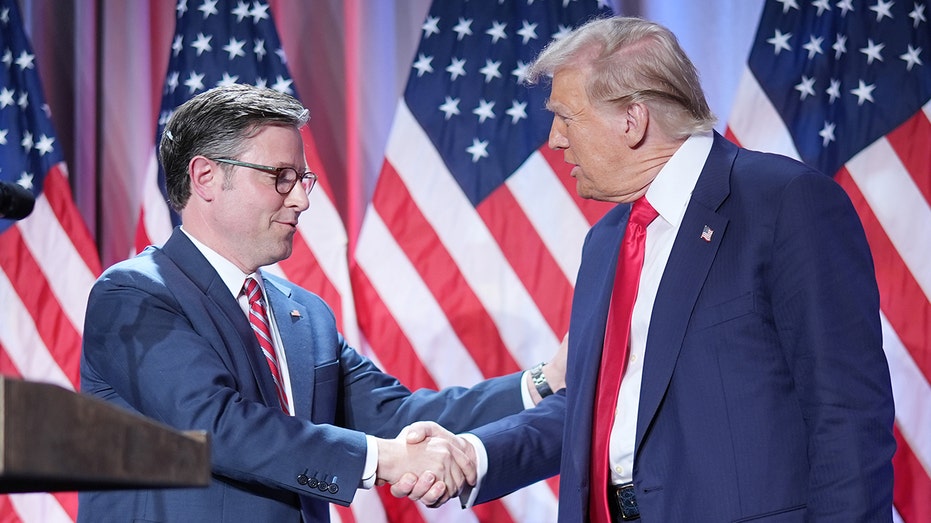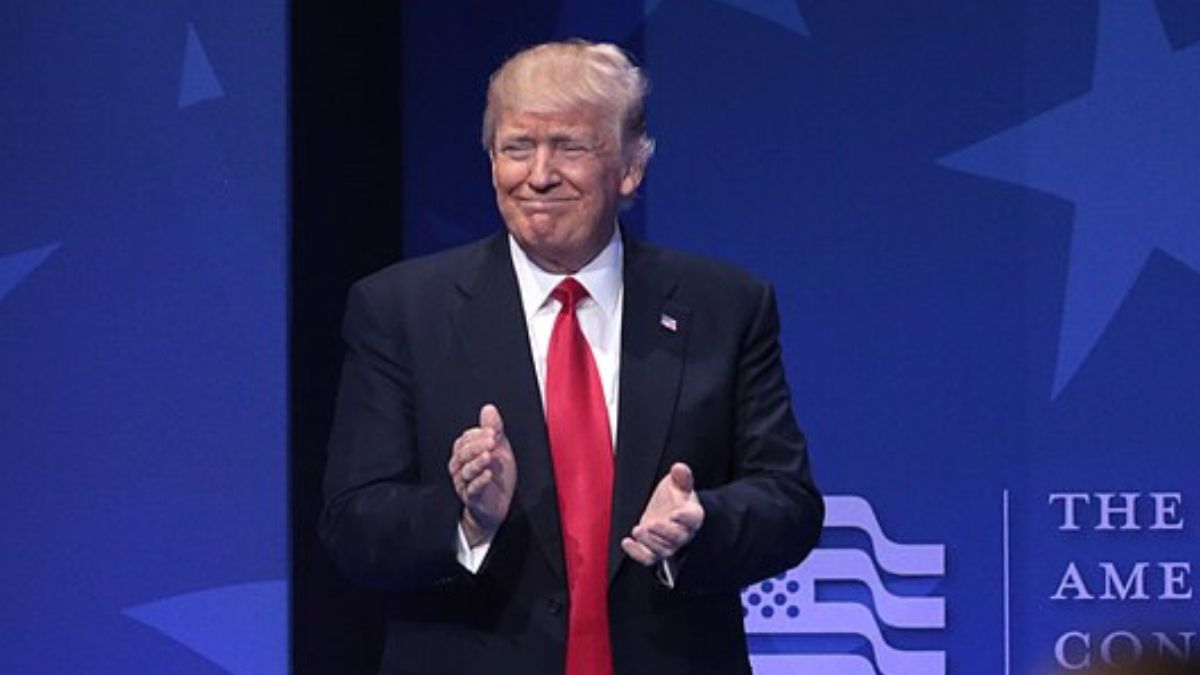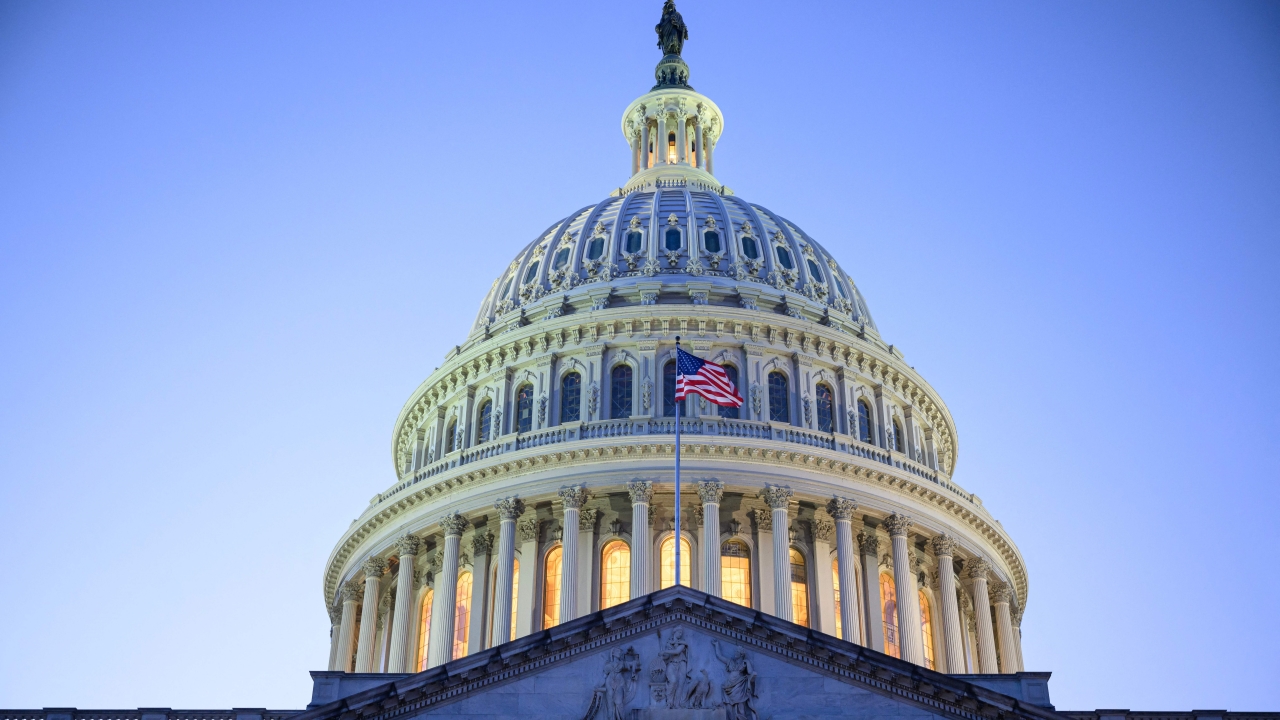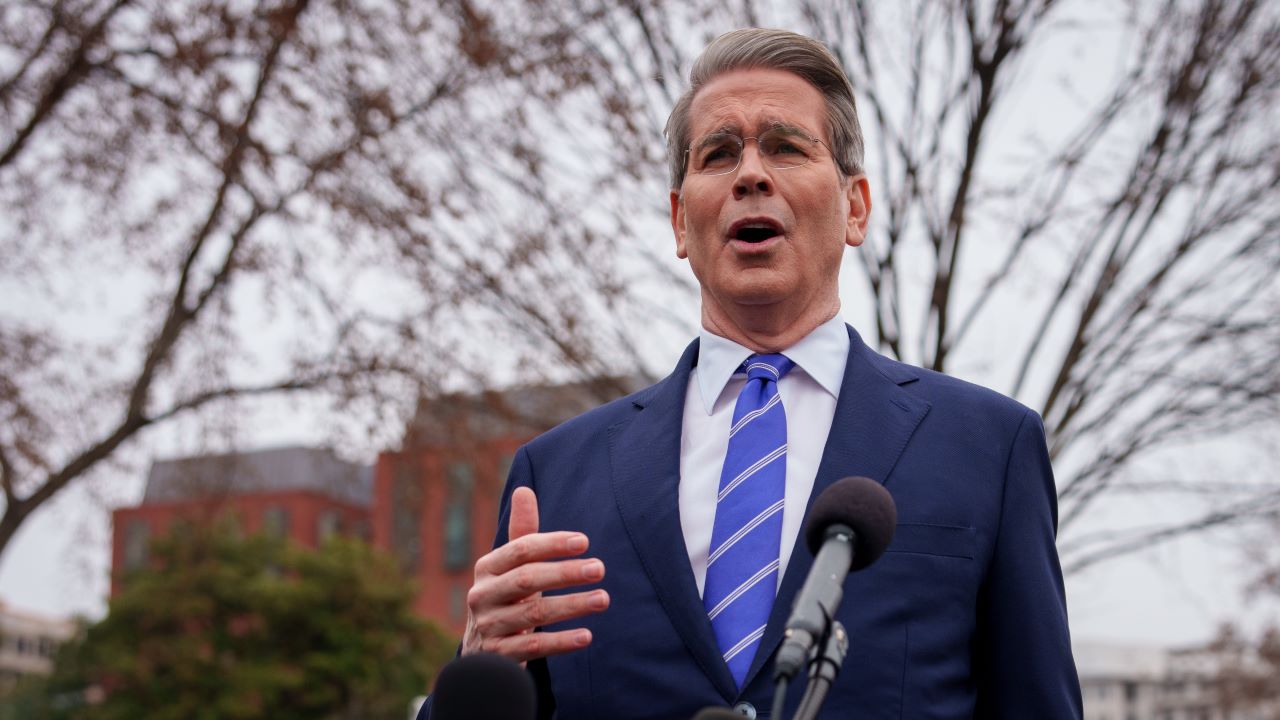Will Elise Stefanik Get the Last Laugh?
Inside Trump’s decision to kill the MAGA star’s Cabinet nomination

This article was featured in the One Story to Read Today newsletter. Sign up for it here.
The low point of Elise Stefanik’s career arrived late last month in the form of a phone call from the White House. Just days before the Senate planned to confirm her as the next ambassador to the United Nations, President Donald Trump was on the other line asking her to withdraw. By way of consolation, the president assured Stefanik that he’d make it up to her: “You’re going to get a much bigger job,” Trump said, according to three people familiar with the conversation.
Stefanik took the news in stride. “I’ve been counted out many times in my political career,” she told me last week. “This is just Chapter 1.” But for now, her decade-long rise in Republican politics has suddenly stalled. Imagine a student about to head off to college—the car already stuffed with suitcases—only to be told she had to spend another year in high school. Stefanik returned to a House seat that she had practically abandoned; she had already given up her position as chair of the GOP caucus. Her top aides had left—on LinkedIn, her chief of staff was briefly listed as “deputy to the U.S. ambassador to the United Nations.” Allies were stunned. “I was really surprised and disappointed,” Senator Jim Banks of Indiana told me.
To Stefanik’s many critics, the turnabout represented a rich comeuppance for one of the Republican Party’s biggest sellouts. During a private Democratic-caucus meeting last week, House Minority Leader Hakeem Jeffries joked about Stefanik losing her nomination, a person in the room told me. “It couldn’t have happened to a better person, y’all,” Jeffries said about his New York colleague. The party broke out in laughter and applause.
A onetime moderate, Stefanik had hitched her career to Trump’s, passing on bids for House speaker and statewide office so she could angle for the vice presidency. She had settled for a much lower post, and now she couldn’t even land that. Today she finds herself right back where she started before going all in for Trump—a rank-and-file member of Congress.
[Read: Elise Stefanik’s Trump audition]
Yet where others see humiliation, Stefanik sees opportunity. “I’m frankly excited for what lies ahead,” she told me. In private, people who have followed her career are blunt about how Stefanik could use this setback to her advantage: “The president of the United States fucking owes her,” one GOP official told me, who, like others in this story, was granted anonymity to speak candidly about various party leaders. “Many people in the Congress think she needs to be taken care of,” a Stefanik ally added. Trump seems to understand this too. “She’s doing me a big favor,” he told reporters last week.
Stefanik wants that favor repaid, so instead of griping about a presidential betrayal, she is reaffirming her loyalty to Trump. He needs her vote in the House to pass an economic agenda she once opposed. She’ll provide that and more. If Democrats thought the sudden loss of a Cabinet seat might quiet Stefanik’s MAGA advocacy, she quickly disabused them of that notion: Within hours of Trump’s announcement of her withdrawal, she was back on Fox News, extolling his leadership and attacking his critics.
What makes Stefanik’s last-minute withdrawal so unusual is that her nomination faced no significant opposition; she sailed through her confirmation hearing and seemed assured of winning bipartisan support. Stefanik’s misfortune resulted not from her own vulnerability, but from her party’s. Speaker Mike Johnson couldn’t afford to lose her vote in the House, where his narrow majority is struggling to enact Trump’s agenda.
Stefanik allies told me the president was “spooked” by internal polling in mid-March that showed Republicans losing a special election in Florida to fill the seat vacated by his national security adviser, Mike Waltz. The Republican candidate, Randy Fine, ended up winning by 15 points last week, but that represented an 18-point swing toward Democrats from Waltz’s victory in November. In another House election last week, the GOP margin shrank by more than 20 points compared with the fall.
Democrats have pointed to the results as evidence that the president’s agenda is deeply unpopular with voters. Republicans won’t publicly blame the backlash on Trump, but they were growing worried about a third congressional seat: Stefanik’s. The president carried her district in upstate New York easily last fall, but the area is not as red as the two Florida districts that were up for grabs. And with Stefanik unable to act as a power broker while she prepared to go to the UN, local GOP leaders had failed to coalesce around a strong candidate to replace her. “We don’t want to take any chances,” Trump told reporters after he announced her return to the House.
The Republican panic scuttled a move that Stefanik had been planning for months. As the possibility of a Trump win grew last fall, Stefanik decided that UN ambassador was the job she wanted. It’s far from the most influential role in a Republican administration; conservatives routinely bash the organization and call for the U.S. to reduce funding for it. But Stefanik would have had a global platform to defend Trump’s foreign policy and attack anti-Semitism, which has become one of her specialties. In 2023, she grilled university presidents about anti-Semitism on their campuses—a political display that raised her national profile and led three of them to resign.
The UN job could also be a stepping stone to higher office, as it was for Bill Clinton’s first-term ambassador, Madeleine Albright, who would go on to become secretary of state. And perhaps not least, the posting comes with one of the most opulent perks in federal housing: a 6,000-square-foot Manhattan apartment that the government bought for nearly $16 million during the first Trump administration.
Stefanik interviewed for the position with Trump’s transition team before the election. Two days after his victory, she told the president that she wanted the job, and he said yes. Johnson was concerned as soon as he heard about the offer. Votes were still being counted in western states, and Republicans hadn’t clinched a majority in the House. Plucking Stefanik would further narrow Johnson’s margin, which was likely to be no more than a few votes.
The speaker called Trump at Mar-a-Lago and tried to get him to walk back the offer, according to two people familiar with the conversation, which several others heard. In a separate call, Stefanik warned Johnson not to stand in her way. (A Johnson spokesperson, Taylor Haulsee, acknowledged to me that the speaker frequently talked with Trump about how tapping House members for his Cabinet would reduce the GOP’s majority. “It became a running joke,” Haulsee told me. But, he said, “it is categorically false—and a flat-out lie—that in any of those conversations the speaker ever even hinted that Rep. Stefanik should not be picked for the post or that she would not do an outstanding job.”)
The speaker retreated. When Trump made Stefanik’s pick official on November 11, Johnson released a statement warmly congratulating her.
Although Stefanik was Trump’s first announced Cabinet pick, two of her fellow nominees left the House before she could. The first was Matt Gaetz, Trump’s initial choice for attorney general, who abruptly resigned from his Florida seat in an apparent attempt to head off the release of an ethics report. Gaetz’s exit ultimately led Waltz to leapfrog Stefanik, both because his appointment as national security adviser did not require Senate confirmation and because Florida officials wanted to schedule the special elections to replace him and Gaetz on the same day. (Waltz initially suggested to Trump that he could simultaneously serve in the House and as national security adviser for a time, two people familiar with the idea told me. The administration scotched the plan before Trump took office.)
Stefanik was ready for a floor vote in the Senate the day after Trump’s inauguration, but the White House urged Republicans to hold off. Now that Waltz and Gaetz had resigned, the House GOP needed Stefanik’s vote to pass the party’s budget resolution and legislation to avert a government shutdown. The new plan was for the Senate to confirm Stefanik on April 2, one day after the twin Florida elections would allow House Republicans to replenish their ranks.
But as the elections neared, the GOP’s worries deepened. Fine, the party’s candidate to replace Waltz was raising far less money than his Democratic opponent. Public polls showed his lead slipping to the single digits, and Republicans saw an internal survey that had the Democrat in the lead. Then came The Atlantic’s report that Waltz had accidentally invited its editor in chief, Jeffrey Goldberg, to a Signal group chat in which Trump’s senior national-security officials discussed military plans to attack Houthi rebels in Yemen. Republicans feared that the fallout could further damage their chances to hold Waltz’s seat, and potentially Stefanik’s too.
Three days later, Trump asked Stefanik to withdraw her nomination. The president was so angry with Waltz that he spent part of the call with Stefanik ranting about him, people familiar with the conversation told me. But he also flattered her, telling her that he missed seeing her defend him on television as frequently as she used to. (She told him that as a nominee for a senior diplomatic position, she had to stay out of domestic politics.)
Stefanik’s willingness to stay in the House drew praise from fellow Republicans, who lauded her loyalty to the party and to Trump. Senator Markwayne Mullin of Oklahoma, a Republican who has spoken with Trump and Stefanik in recent days, told me that if she had said no to the president, he thought Trump would have relented and stood by her nomination. The fact that she agreed so readily, Mullin said, won’t be forgotten. “She did this truly for the team.”
Karoline Leavitt, the White House press secretary, described Stefanik to me as “a loyal and strong vote and voice for President Trump on Capitol Hill. He appreciates her selfless decision to remain in the House so he can enact his ‘America First’ agenda.”
[Tom Nichols: The loyalists are collecting their rewards in Trump’s Cabinet]
As Stefanik awaits another chance, she is stockpiling those statements as if they’re rave reviews on a movie poster. “There has never been more positive support, ever, really, in my career—from Republicans, from donors, from colleagues, from senators,” she told me. “I'm very proud to be one of the president’s top allies, and everyone knows it—even the critics.”
Stefanik allies say she could be in line for a top national-security or intelligence appointment later in Trump’s term. Secretary of state isn’t out of the question if Marco Rubio doesn’t stay all four years. Or Stefanik could run for New York governor next year—likely with a Trump endorsement—against the state’s unpopular Democratic incumbent, Kathy Hochul. “There are tons of opportunities,” Stefanik told me. “I have not ruled anything out, nor should I rule anything out.”
Others aren’t so sure Stefanik will get what she wants. One of her colleagues in New York, Democratic Representative Dan Goldman, told me she should be wary of Trump’s promises to repay her. “Donald Trump has no loyalty to anyone or anything, and he will do whatever he wants regardless of the impact it has on other people,” Goldman said. “Elise Stefanik, at least as of now, got nothing.” Another New York Democrat, Representative Joseph Morelle, told me that on a personal level, he felt sympathy for her. But, he added, “this is the bed she made.”
People close to Stefanik and Trump privately describe her return to the House as though she’s a presidential emissary being sent to stabilize a rickety Republican leadership team. On the day I spoke with her, a group of GOP lawmakers rebelled against Johnson’s attempt to quash a rule change that would allow new parents to cast House votes by proxy. The Republicans joined with Democrats to effectively paralyze the chamber. In response, Johnson sent the entire House home for the week, sounding like a frustrated father punishing his unruly children.
At Trump’s urging, Stefanik will rejoin the party leadership, a reunion that promises to be awkward. Johnson and Stefanik have yet to determine what role she’ll fill, and both want to avoid the perception that they’re merely squeezing in an additional chair at a crowded table.
More than anything else, Trump needs Stefanik’s vote so Congress can pass the “one big, beautiful bill” that would enact the bulk of his legislative agenda—an extension of his 2017 tax cuts, plus an infusion of funds to secure the southern border. That mission, however, offers an uncomfortable reminder of Stefanik’s past wariness of Trump. Eight years ago, she was one of just 12 House Republicans to vote against his tax cuts. (At the time, Stefanik cited a provision that penalized residents of high-tax—and predominantly Democratic—states such as New York and California by limiting what they could write off their federal taxes.)
Today, such a vote from Stefanik is unthinkable. Other New York Republicans have vowed to oppose a tax bill that doesn’t expand a popular tax break—known as SALT—for their constituents. Stefanik is making no such threats; Trump has backed a fix for the issue, she told me. “I look forward to voting for the package,” Stefanik said, “and Democrats who vote against the extension of these tax cuts will be voting for the largest tax increase on the American people in our nation’s history.”
The president may owe Stefanik a favor, but her reward—that “much bigger job” he promised—still depends on her loyalty. She will need to stay in his good graces a while longer.
What's Your Reaction?





















































































